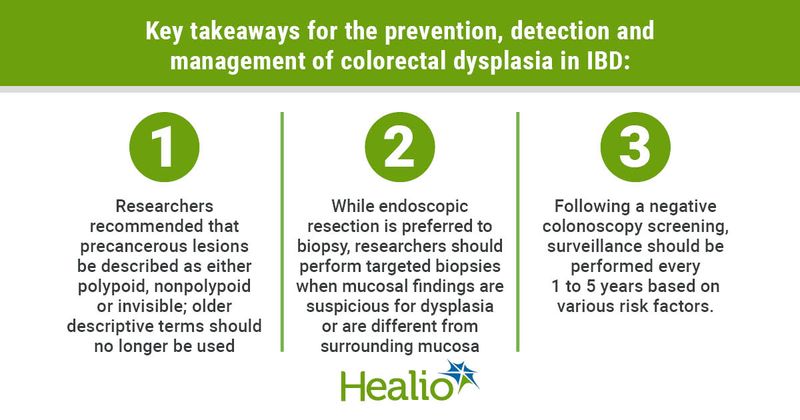AGA publishes practice update for management of colorectal dysplasia in IBD
The American Gastroenterological Association published a conceptual model and clinical practice update for the prevention, detection and management of colorectal dysplasia in patients with inflammatory bowel disease.
“Not long ago, notions of imperceptible colorectal cancer development and urgent need for colectomy in the face of dysplasia dominated IBD practice,” Sanjay K. Murthy, MD, FRCPC, The Ottawa Hospital IBD Center, and colleagues wrote. “However, improvements in disease management, as well as endoscopic technology and quality, have dramatically changed the way in which we conceptualize and manage IBD-related dysplasia over the past 20 years.”

Based on evolving literature, researchers developed 14 best practice advice statements for IBD dysplasia detection, surveillance of ileoanal pouch, chemoprevention and more. Key highlights for the prevention, detection and management of colorectal dysplasia in IBD follow.
Researchers recommended that precancerous lesions be described as either polypoid ( 2.5 mm tall), nonpolypoid (< 2.5 mm) or invisible; older descriptive terms should no longer be used.
In all people with colonic IBD, clinicians should perform initial colonoscopy screening for dysplasia 8 to 10 years after disease diagnosis and immediately following a primary sclerosing cholangitis diagnosis.
While endoscopic resection is preferred to biopsy, researchers should perform targeted biopsies when mucosal findings are suspicious for dysplasia or are different from surrounding mucosa.
Researchers recommended specialist referral when the resectability of a lesion is called into question.
Following a negative colonoscopy screening, surveillance should be performed every 1 to 5 years based on various risk factors.
Among patients at a high risk for colorectal dysplasia development or persistent moderate to severe pouchitis/pre-pouch ileitis surveillance should be performed annually.
Targeted biopsies are appropriate during colonoscopy while removal and sampling of all lesions is not required.
“Improvements in disease management, as well as endoscopic technology and quality, have dramatically changed the way in which we think about IBD-related dysplasia, aligning closely with how we conceptualize dysplasia in the non-IBD population,” Murthy and colleagues concluded. “We look forward to a day when a single guideline can potentially address dysplasia surveillance and management in IBD and non-IBD patients alike. Until then, this document serves to summarize updated understanding and best practice advice for dysplasia management in IBD.”
